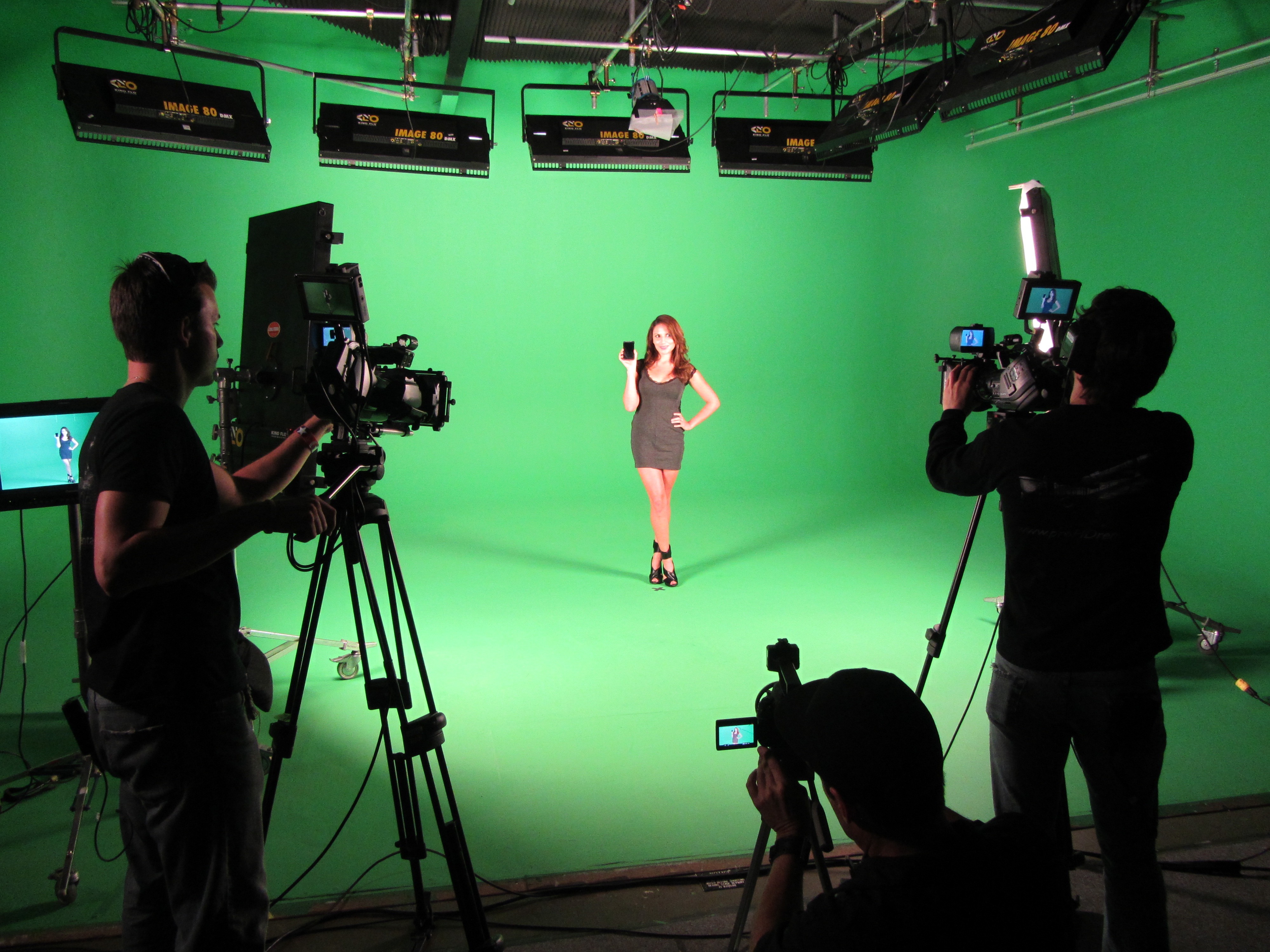Creative Video Production FAQs: what businesses need to know before starting
Exploring the Newest Patterns in Video Production for 2025
As we approach 2025, the video production landscape is poised for substantial development, characterized by developments in augmented truth and AI-driven modifying tools. The assimilation of interactive narration and immersive 360-degree experiences is redefining audience engagement, while lasting production methods obtain prominence. Furthermore, enhanced live streaming abilities are readied to democratize material access like never before. These advancements increase necessary inquiries regarding the future of creativity and modern technology in video production-- what implications will these fads hold for consumers and developers alike?
Enhanced Fact in Video Production
Enhanced truth (AR) is poised to revolutionize video production by seamlessly blending electronic aspects with live-action video. This ingenious technology improves storytelling by supplying immersive experiences that involve customers on a deeper level. AR allows filmmakers to integrate interactive graphics, animations, and details overlays straight into the real-world environment captured on display, producing a vibrant viewing experience that traditional approaches can not accomplish.
In 2025, we can anticipate AR to come to be an important component of numerous video production processes, from pre-production preparation to post-production improvements. The capability to envision complicated scenes and elements in real-time will make it possible for supervisors and cinematographers to make enlightened choices during shooting. Additionally, AR can help with remote collaboration, allowing employee to communicate with 3D versions and aesthetic effects from various locations, therefore simplifying the production workflow.
Furthermore, advertising and promotional techniques will gain from AR integration, as brands significantly utilize this modern technology to develop one-of-a-kind and interesting content. As customer need for interactive and innovative experiences proceeds to expand, AR will certainly play an important role in forming the future of video production, driving creative thinking and increasing the possibilities for filmmakers.
AI-Powered Editing Devices

Improved Automation Features
The surge of AI-powered editing and enhancing devices is readied to change the video production landscape, improving operations and enhancing creative opportunities. These improved automation functions are made to reduce manual work, allowing content creators to focus more on narration and imaginative vision. By leveraging artificial intelligence algorithms, these devices can evaluate video, identify key minutes, and recommend optimal cuts, considerably lowering modifying time.
Among the most remarkable developments is the ability of AI to recognize and adjust to various editing styles. This capacity makes it possible for editors to apply specific aesthetic appeals or genres to their tasks successfully, helping with an extra individualized method. AI-driven shade grading and sound editing devices can automatically improve audio and aesthetic top quality, guaranteeing a professional coating without comprehensive hands-on changes.
Furthermore, the assimilation of automated features in video modifying software program enables for smooth assimilation with other production aspects, such as modifications and graphics, making the editing process extra cohesive. As these tools proceed to advance, they promise to democratize video production, enabling customers of all skill degrees to create high-quality content swiftly and effectively, inevitably transforming the market for many years ahead.
Real-Time Collaboration Advantages
Real-time partnership is ending up being progressively crucial in video production, particularly with the advent of AI-powered modifying tools. These ingenious innovations allow numerous stakeholders, including clients, directors, and editors, to function with each other flawlessly, no matter their physical locations. By assisting in instant comments and modifications, AI-powered systems boost the imaginative procedure, permitting groups to make decisions rapidly and efficiently.
One of the key advantages of real-time collaboration is the capacity to utilize AI for data-driven understandings. AI algorithms can assess video and suggest edits or shifts that straighten with the task's vision, enhancing the process. This not only increases the editing and enhancing procedure but additionally assures that innovative options are notified by historical data and sector trends.
Real-time partnership fosters an extra inclusive environment, urging varied point of views and ideas. Team participants can contribute their knowledge, improving the general high quality of the production. As video projects end up being increasingly complicated, the demand for cohesive synergy is extremely important, and AI-powered editing and enhancing devices are transforming just how creative specialists collaborate. Inevitably, these improvements in real-time cooperation are poised to redefine the landscape of video production in 2025 and past.

Improved Interface
Innovative interface in AI-powered editing and enhancing devices are changing the video production landscape by enhancing the user experience and improving workflows. These tools leverage advanced formulas to simplify intricate modifying tasks, permitting designers to focus more on storytelling and creativity as opposed to technological complexities.
One vital advancement is the assimilation of user-friendly drag-and-drop capabilities, which make it possible for individuals to construct their jobs seamlessly. Paired with real-time comments mechanisms, editors can envision changes instantly, lowering the time invested on modifications. Additionally, AI-driven features such as computerized scene detection and smart shade grading offer recommendations based upon project context, significantly speeding up the editing and enhancing process.
In addition, the rise of adjustable user interfaces allows users to tailor their work area to fit specific preferences, improving efficiency and efficiency. For example, editors can prioritize features and tools they make use of frequently, decreasing distractions and taking full advantage of workflow fluidity.
As these AI-powered modifying tools remain to develop, their enhanced individual interfaces are established to redefine sector criteria, making top quality video production available to a broader variety of developers. This fad not just equalizes video modifying yet additionally cultivates innovation in material production, establishing the phase for amazing growths in 2025 and past.
Interactive Narration Techniques
As video production advances, interactive narration methods are ending up being essential for creating immersive visitor experiences. By including branching narrative frameworks, designers can use audiences an individualized journey with the material, improving involvement. In addition, real-time audience participation permits for dynamic storytelling that adjusts to audience choices, fostering a much deeper connection with the product.
Immersive Customer Experiences
The evolution of immersive visitor experiences is transforming the landscape of interactive narration methods, allowing target markets to engage with stories in unprecedented means. By integrating digital truth (VR), increased reality (AR), and combined reality (MR) technologies, makers are crafting atmospheres where visitors do not simply observe tales but proactively take part in them. This shift in the direction of immersion fosters a feeling of presence and psychological investment, transforming easy consumption into dynamic exploration.
Developments in 360-degree video and spatial audio better enhance these experiences, allowing customers to navigate and interact with their surroundings. Such modern technologies promote a multi-sensory approach to storytelling, where visual and acoustic components are intricately woven together to produce a natural story. This not only mesmerizes the audience but likewise urges much deeper links to the content.
In addition, the rise of interactive platforms is equipping makers to experiment with non-linear narratives, providing target markets the capacity to influence results and personality arcs in genuine time. As immersive visitor experiences proceed to advance, they are readied to redefine just how tales are informed and received, leading the way for cutting-edge forms of web content that reverberate with varied target markets throughout the world.
Branching Narrative Structures
Building upon the immersive audience experiences that have actually changed interactive storytelling, branching narrative structures are emerging as a powerful technique to even more engage audiences. These structures enable customers to influence the direction of the narrative, creating a more individualized and dynamic experience. By offering numerous paths and results, material developers can satisfy diverse audience choices and foster much deeper emotional connections with the material.
As technology advancements, the application of branching narratives has come to be more innovative. Modern systems allow seamless shifts between choices, boosting the customer's sense of agency. This interactivity not just captivates audiences but additionally encourages duplicated viewings, as customers check out alternate stories and ends.
In addition, branching narratives can be effectively incorporated into numerous categories, from gaming to movie and instructional content. This flexibility opens up new methods for storytelling, allowing makers to explore intricate character arcs and intricate plots. As we relocate right into 2025, the relevance of branching narrative frameworks in video production will likely proceed to grow, improving just how stories are informed and experienced, eventually redefining the partnership between creators and their target markets.
Real-Time Target Market Interaction
Real-time target market involvement is reinventing interactive storytelling by enabling designers to get in touch with customers in extraordinary methods. This cutting-edge approach enables target markets to affect stories as they unfold, improving immersion and psychological investment. With innovations in innovation, such as online ballot, conversation assimilation, and augmented reality, audiences can take part actively, choosing that form the direction of the story in real-time.
Systems leveraging these techniques are not only redefining conventional narration yet additionally fostering community communication. By including attributes like real-time Q&A sessions and interactive personality discussions, makers can build much deeper links with their audience, making sure a much more individualized viewing experience. Consequently, stories end up being extra vibrant, adjusting to target market comments and choices instantly.
Furthermore, real-time engagement enhances data collection, providing useful understandings into customer habits and preferences. This info can direct future productions, refining material strategies to much better resonate with target demographics. As we approach 2025, the assimilation of real-time audience engagement right into video production will likely become a conventional practice, changing exactly how stories are told and experienced. The advancement of interactive storytelling is not merely an improvement; it is a necessary shift in the direction of a much more engaging and participatory narrative structure.
360-Degree Video Experiences
Immersive video experiences are set to redefine content usage in 2025, as developments in modern technology remain to obscure the lines between truth and virtual involvement. The rise of 360-degree video and increased reality (AR) is transforming just how audiences connect with material, developing chances for much deeper emotional links and individualized storytelling.
With the expansion of inexpensive virtual reality headsets and mobile phones qualified of sustaining premium immersive web content, creators can currently produce videos that place visitors at the center of the action. This change not just enhances customer involvement but likewise permits brands to create special experiences that reverberate with their target market. Video Production. Traveling firms can offer digital excursions of locations, while educational establishments can simulate complex atmospheres for immersive understanding.
The integration of interactive elements in 360-degree videos enables visitors to make selections that affect the story, fostering a sense of company and investment in the material. As developers try out these technologies, we can expect a surge in innovative narration methods that prioritize audience participation. In this progressing landscape, the difficulty will be to balance imaginative vision with the technological needs of producing premium immersive experiences.
Sustainable Production Practices
As the video production landscape evolves with cutting-edge innovations like 360-degree experiences, the market is likewise increasingly focusing on sustainable production practices. Identifying the environmental impact of typical recording techniques, production companies are taking on eco-friendly campaigns to reduce their carbon footprint.
One substantial pattern is using renewable power sources, such as solar and wind power, to fuel production collections. This shift not just decreases dependence on fossil fuels however additionally lowers functional expenses over time. In addition, numerous companies are implementing electronic procedures to limit paper use, therefore advertising a more sustainable workflow.

Cooperation with regional communities and businesses additionally plays a crucial function in sustainable techniques, as it promotes local economic situations and minimizes transport emissions. On the whole, the commitment to sustainability in video production mirrors a wider social shift towards ecological stewardship, guaranteeing that future generations can continue to take pleasure in cinematic narration without endangering the world's health.
Improved Live Streaming
The future of video production is being improved by improved live streaming capacities, which are transforming just how audiences involve with web content. As innovation breakthroughs, live streaming is coming to be a lot more interactive and easily accessible, permitting developers to get in touch with viewers in real-time. This shift not just improves target market participation but likewise cultivates a sense of neighborhood around shared experiences.
With the combination of high-def video and audio quality, combined with low-latency streaming, audiences currently enjoy seamless broadcasts that equal typical television. Platforms are progressively including functions such as multi-camera arrangements, interactive surveys, and audience Q&A sessions, making live events much more interesting and vibrant.
The surge of decentralized streaming methods assures far better integrity and scalability, making it possible for material designers to get to larger audiences without compromising top quality - Video Production NYC. As brands and influencers take advantage of these improvements, the possibility for cutting-edge advertising and marketing approaches via real-time streaming comes to be evident
In 2025, we can anticipate additional developments in increased fact overlays and improved analytics, equipping makers to refine their material and tailor it to audience choices. Improved online streaming is not just a fad; it is a crucial component forming the future of material consumption and production.
Digital Truth Combination
With enhanced live streaming establishing the stage for even more interactive experiences, online reality (VIRTUAL REALITY) assimilation is poised to take audience involvement to unmatched levels. As we come close to 2025, the merging of VR technology with video production is changing exactly how content is developed and taken in. By engaging audiences in a 360-degree setting, manufacturers can provide distinct experiences that conventional formats can not match.
Brand names are increasingly leveraging virtual reality to produce engaging narratives that resonate deeply with audiences. This assimilation enables experiential advertising and marketing, where consumers can connect with product and services in an online space, cultivating a more individual connection. Events such as digital concerts, item launches, and immersive storytelling sessions are becoming commonplace, involving users in methods that boost retention and psychological investment.
Developments in equipment and software are making Virtual reality much more obtainable to developers, resulting in a wider array of content. As production expenses lower and user-friendly devices emerge, we can expect a rise in cutting-edge virtual reality projects across different fields, from amusement to education. The future of video production lies in these immersive experiences, redefining narration and audience interaction in the digital landscape.
Frequently Asked Concerns
What Are the Essential Skills for Video Producers in 2025?
Vital abilities for video manufacturers in 2025 consist of advanced technical effectiveness in editing and enhancing software application, solid storytelling capacities, versatility to arising modern technologies, cooperation skills for diverse groups, and an eager understanding of audience interaction methods across platforms.
How Can Independent Creators Access Advanced Video Production Technologies?
Independent creators can access innovative video production innovations through economical software systems, cloud-based modifying tools, open-source sources, and on the internet courses. Cooperations with technology companies and leveraging area resources also boost access to sophisticated production devices.
What Are the Potential Prices Connected With These New Video Production Trends?
The potential prices connected with arising video production patterns can differ you could try this out considerably, encompassing costs for advanced tools, software application licenses, training, and personnel. Budgeting successfully is important for makers to take advantage of these technologies without spending too much.
How Can I Determine the Success of My Video Production Initiatives?
To determine the success of your video production efforts, examine key performance indications such as viewer interaction, conversion prices, audience retention, and comments. Make use of analytics tools to collect data and acquire workable insights for future enhancements.
What Industries Are The Majority Of Impacted by Video Production Trends in 2025?
Industries such as advertising, education and learning, medical care, and entertainment are significantly affected by arising video production fads. Video Production. These sectors progressively use ingenious strategies to boost involvement, boost interaction, and provide engaging material to their particular target markets
Ingenious individual interfaces in AI-powered editing tools are transforming the video production landscape by enhancing the user experience and streamlining workflows. As we come close to 2025, the assimilation of real-time target market interaction right into video production will likely end up being a conventional method, transforming how tales are informed and experienced. As the video production landscape progresses with ingenious technologies like 360-degree experiences, the industry is likewise significantly focusing on sustainable production practices. The future of video production is being improved by boosted online streaming capabilities, which are revolutionizing just how target markets engage with web content. To gauge the success of your video production initiatives, evaluate key efficiency signs such as viewer involvement, conversion prices, audience retention, and responses.